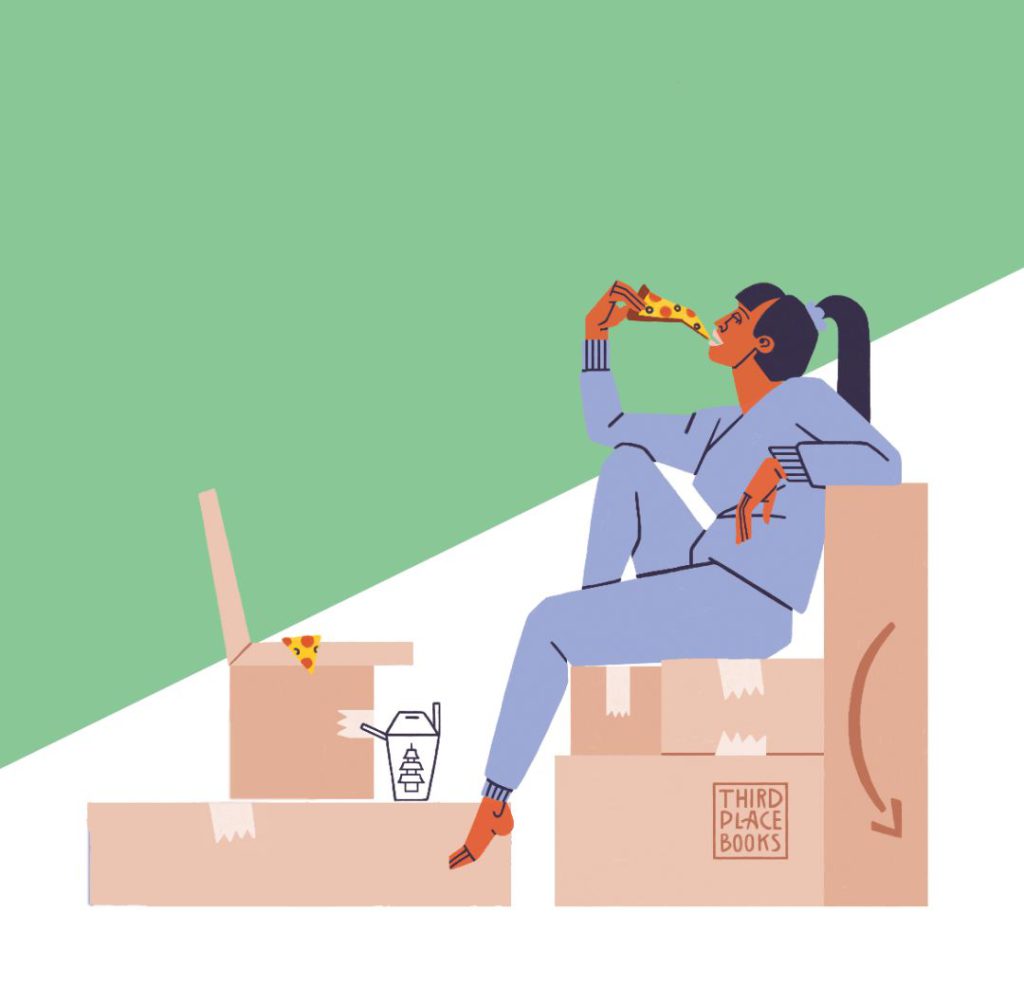
By Stefan Milne
We imagined drones gushing into the sky over South Lake Union, each clutching an Amazon package. Or maybe fleets of self-driving cars launching pizzas onto porches like rogue paperboys. As much as anywhere, Seattle was writing the future of delivery.
Maybe, eventually, we’ll get there.
While the Covid-19 pandemic wreaked havoc elsewhere, it forced businesses large and small to reconsider doorstep drop-offs. The spike in demand then forced the question: What do we really want out of delivery?
For some the answer has only been—more. By the end of April, Amazon had hired nearly 175,000 to keep up with skyrocketing demand. By the end of May, a spokesperson says, the company had increased its grocery delivery (through Amazon Fresh and Whole Foods Markets) by 160 percent in a few weeks. Other businesses, like Third Place Books, which has three bookstores in the region, already sold books online and mailed them to customers, but that was a small part of the business. In March, the company had to transform into an online marketplace. It reworked its website as “traffic went up just ridiculously,” says Robert Sindelar, the stores’ managing partner. (Total revenue still dropped about 50 percent.) But as businesses safely reopen, expect people to return to bookstores. The physical spaces are what differentiate them from Amazon. Delivery, for some sectors, will be a blip.
Restaurants are a different matter. For years, delivery apps like Uber Eats and DoorDash have encroached on in-house dining business, often taking as much as a third of the revenue from meals they deliver. “At that point, it’s not income—it’s an expense,” says Olga Sagan, who owns Seattle’s Piroshky Piroshky bakeries. But since more people have turned to delivery (and liked what they got), restaurants are reconsidering how to integrate it sustainably. When walk-up business vanished in the third week of March, Sagan built Catch22Delivery, essentially a large online map that links to restaurants’ websites so customers can avoid third party apps. By late May, she was planning a delivery co-op for independent restaurants through the site, something Piroshky already offers—dispatching vans to drop off packages of pastries, borscht, and now even Pike Place flowers.
Coming up with a new form of delivery, either through a co-op or independently, is “crucial,” says Eric Rivera, both so restaurants don’t lose money and so they can control the experience. He and Sagan agreed that the app-based system—essentially hiring a taxi to bring you dinner—left restaurants, delivery drivers, and customers frequently unsatisfied. While restaurants rely on delivery to stay afloat indefinitely, they can turn it into an extension of their service—not a disconnected middleman.
Before the pandemic, Rivera’s Ballard space Addo did many things—from catering to a chef’s counter. When dining rooms closed, Addo transformed. First, it offered a range of ready-to-cook meat, seafood, and pantry items, which the restaurant let you pick up or have delivered with its own vans (charging $15 for orders under $150). By the end of May its website presented around 25 options or “experiences”—from three days of premade lunches to a cookbook library to a five-course dinner that’s 95 percent prepped. He figures many changes will be permanent, but “it’s basically evolving every day as we go.”
A constant evolution is the best way to consider delivery’s future, thinks Anne Goodchild, the founding director of the University of Washington’s Supply Chain Transportation and Logistics Center. “Our minds seem to always want to go to these all or nothing scenarios, and that’s not how the world works.” Some of the habits people form—like getting more takeout or groceries delivered—will stick around. Some won’t. She’s been impressed by the elasticity of systems during a “shocking period of change.” But those systems will stay elastic, dynamic. “I remember when we were never going to need paper again, because everything was going digital. And, you know, we still use paper.”